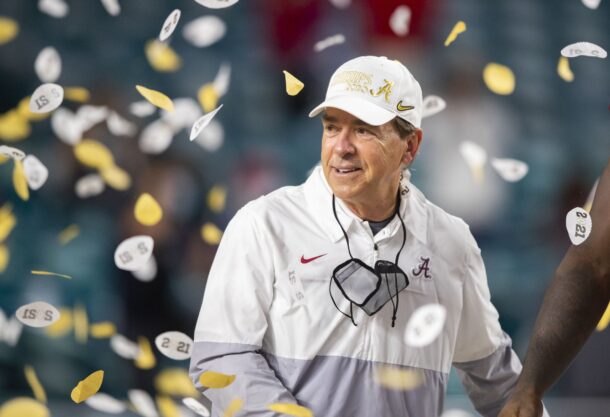Voting for individual awards such as the John R. Wooden Award is an inexact science.
Sure, sometimes the choice is obvious. But there are just as many instances in which multiple candidates can make an equally strong case for the honor.
In those cases, personal preference takes over.
Are points more important than rebounds or assists? How much does defense factor into the equation? And what about team success?
They’re questions that inevitably lead to the question of whether the voters picked the right player for the award. In these cases, they didn’t choose the right winner for the Wooden Award.
Top Wooden Award Snubs
Here are 5 instances in which the Wooden Award’s voting panel got it wrong. These players were snubbed and should have won the honor symbolic of the nation’s most outstanding college basketball player:
Deandre Ayton, Arizona, 2018
Jalen Brunson, the 2018 winner, was the best player on the Villanova team that won the national championship. Brunson averaged 18.9 points, 3.1 rebounds and 4.6 assists per game and went on to have success in the NBA for the New York Knicks. But those numbers paled by comparison to those put up by Ayton. The 7-foot freshman from Arizona averaged a double-double at 20.1 points and 11.1 rebounds per game. He also posted nearly 2 blocked shots per game while shooting 61% from the floor on his way to becoming the No.1 overall pick in the NBA Draft. A case could also be made for Duke freshman Marvin Bagley III, who posted averages of 21 points, 11.1 rebounds and 1.5 assists.
Kemba Walker, UConn 2011
Yes, Wooden Award winner Jimmer Fredette scored a lot of points and generated plenty of ESPN-driven hype. But Walker was the more complete player. And he was the driving force behind one of the most amazing postseason runs in college basketball history, one that saw UConn win 5 games in 5 days to earn the Big East Tournament title, then win 6 more in a row to claim the national championship. While Fredette led the nation at 28.9 points per game, Walker wasn’t that far behind at 23.5. The Huskies’ star also bettered Fredette in virtually every other statistical category, including rebounds (5.4-3.4), assists (4.5-4.3) and steals (1.9-1.2).
Joe Smith, Maryland, 1995
Maybe the Wooden Award’s association with UCLA was the tipping point that helped Ed O’Bannon win the award in 1995. O’Bannon did lead the Bruins to the national championship before becoming the name on a lawsuit against the NCAA that led to college athletes being allowed to earn compensation for their name, image and likeness. But Smith was the Associated Press National Player of the Year and winner of the Naismith Award. He averaged 20.8 points, 10.6 rebounds and 2.9 blocks per game for a Maryland team that had just begun returning to the national stage under coach Gary Williams.
Wayman Tisdale, Oklahoma, 1985
The debate over the 1985 Wooden Award selection usually centers around Big East rivals Chris Mullin of St. John’s and Georgetown’s Patrick Ewing. Both players had outstanding seasons and they split the 2 major Player of the Year Awards. Mullin won the Wooden Award while Ewing won the Naismith Award. But the argument should also include Tisdale, a 6-9 junior who was even better than both candidates. His 932 points were the most in the nation and his 25.2 per game average ranked him among the top-10 in college basketball. The Oklahoma star also averaged 10.2 rebounds and 1.4 blocks.
Mark Aguirre, DePaul, 1980
Aguirre wasn’t nearly as flashy as Wooden winner Darrell Griffith, who earned the nickname “Dr. Dunkenstein” for the high-flying athleticism that led Louisville to a national championship. But the sophomore guard posted better numbers across the board in helping DePaul finish the regular season ranked No. 1 with a 26-1 record. Aguirre was among the nation’s leaders at 26.8 points per game. He also averaged 7.6 rebounds and 2.8 assists while shooting 55% from the floor. That’s 4 more points and 4 more rebounds than Griffith. It’s a performance that led to his being named college basketball’s Player of the Year by the Associated Press.
Best Player to Never Win a Wooden Award
Patrick Ewing is to the Wooden Award what Peyton Manning was to football’s Heisman Trophy. He was a great player with an outstanding 4-year college career, but who came along at just the wrong time to earn his sport’s top individual award.
The Georgetown center, who went on to become the No. 1 overall pick in the 1985 NBA Draft, averaged 15.2 points, 9.2 rebounds and 3.4 blocks per game while shooting 62% from the floor for the Hoyas. He was a 3-time consensus All-American, the 1984-85 Associated Press Player of the Year and a national champion.
And yet, he always seemed to come in second in the voting for the Wooden Award.
Ewing had the unfortunate timing of a career that overlapped that of Virginia’s Ralph Sampson, a 3-time Wooden winner, and North Carolina’s Michael Jordan, arguably the greatest player of all time. His best shot at winning the award was as a senior in 1985. But he lost out by a slim margin to Big East rival Chris Mullin of St. John’s.
Award-winning columnist Brett Friedlander has covered the ACC and college basketball since the 1980s.






